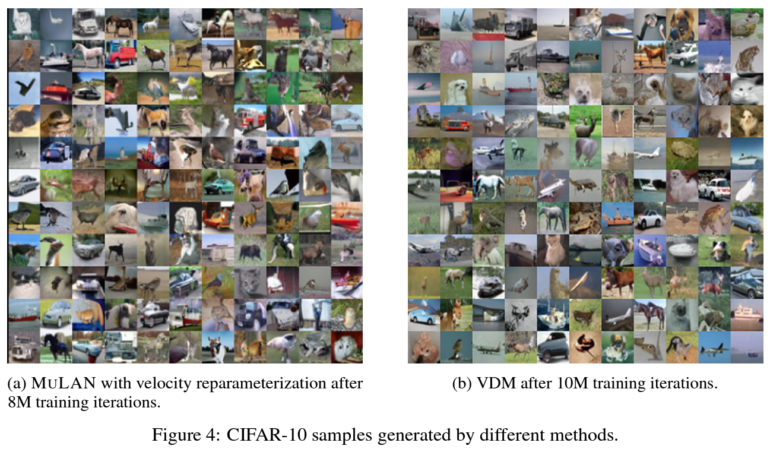TL;DR:
- Cornell University’s MuLAN introduces a data-driven approach to diffusion models.
- It challenges traditional fixed noise schedules with a dynamic, learned mechanism.
- MuLAN incorporates a polynomial noise schedule, conditional noising, and auxiliary-variable reverse diffusion.
- This innovation adapts noise application to each image’s unique characteristics.
- MuLAN achieves state-of-the-art performance in density estimation on datasets like CIFAR-10 and ImageNet.
Main AI News:
Diffusion models, revered for their prowess in generating top-tier images through the orchestration of noise, are currently at the forefront of generative modeling and image synthesis. Their capability to metamorphose data into noise, inspired by the principles of thermodynamics, has sparked a fervent exploration into the realm of enhanced image quality and novel methodologies.
However, the nucleus of challenge within diffusion models resides in the noise schedule – the strategic infusion of Gaussian noise into images. Traditionally, this schedule adheres to the steadfast tenets of thermodynamics, offering a principled yet potentially limiting approach. An intriguing question emerges: could the performance of diffusion models be catapulted to new heights by erasing the constraints of fixed, pre-determined noise schedules and, instead, embracing an adaptive, data-driven paradigm?
The conventional treatment of the noise schedule within diffusion models has been rather rigid, often relegated to the status of a hyperparameter. While rooted in sound principles, this standardized approach might only partially cater to the intricate nuances concealed within diverse datasets, leaving room for potential enhancement. The noise schedule, an elemental factor in image quality, has hitherto conformed to a one-size-fits-all ethos, neglecting the idiosyncratic variances in individual images.
Enter “Multivariate Learned Adaptive Noise” (MuLAN), a groundbreaking machine learning methodology pioneered by researchers at Cornell University. MuLAN disrupts the status quo by introducing a learned, data-driven approach to diffusion, ushering in a departure from the conventional fixed schedules. This innovation enriches classical models with a polynomial noise schedule, a conditional noising process, and auxiliary-variable reverse diffusion. In essence, it challenges the age-old notion of invariant noise schedules, offering a dynamic learning mechanism for noise application that seamlessly adapts to data variances.
MuLAN’s methodology is rooted in the wisdom of learning the intricacies of the diffusion process from the data itself, resulting in a tailored application of noise that gracefully blankets an image. This approach harnesses the power of Bayesian inference, portraying the diffusion process as an approximate variational posterior. The multivariate facet introduces an artful variability in noise application, finely attuned to the unique characteristics of each image. The method encompasses a per-pixel polynomial noise schedule and a conditional noising process, augmented by auxiliary-variable reverse diffusion.
The results achieved by MuLAN are nothing short of remarkable, marking a significant leap in performance. It has, in fact, attained the coveted status of state-of-the-art performance in density estimation across standard image datasets like CIFAR-10 and ImageNet. This resounding success is primarily attributed to MuLAN’s ability to customize the noise schedule for each image instance, bestowing the model with unparalleled fidelity and efficacy.
Conclusion:
Cornell’s MuLAN disrupts the market by ushering in a new era of adaptive noise schedules, promising improved image quality and generative modeling capabilities. This innovation is poised to reshape the landscape of image synthesis and has significant implications for industries relying on high-quality image generation, such as entertainment, advertising, and design.

